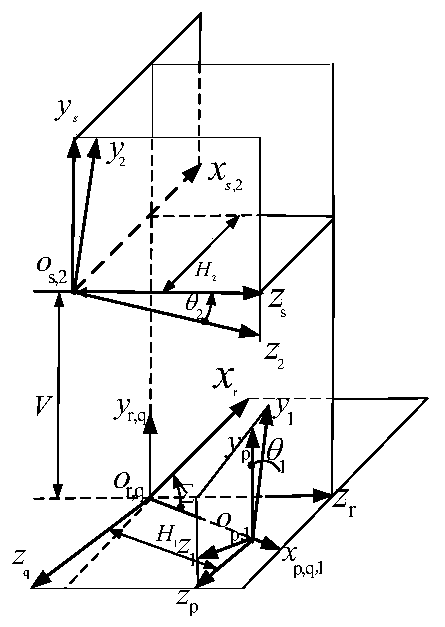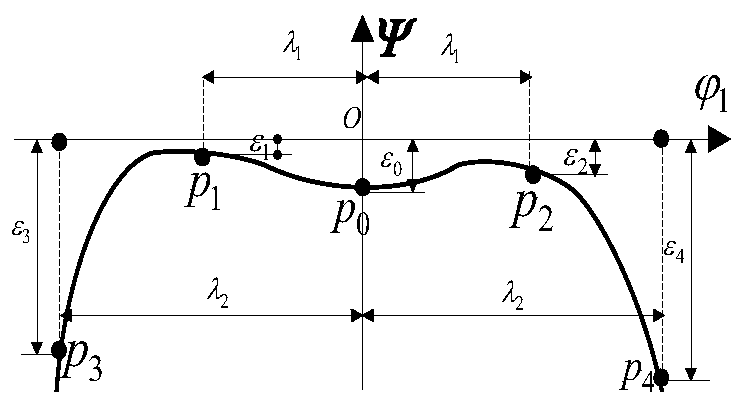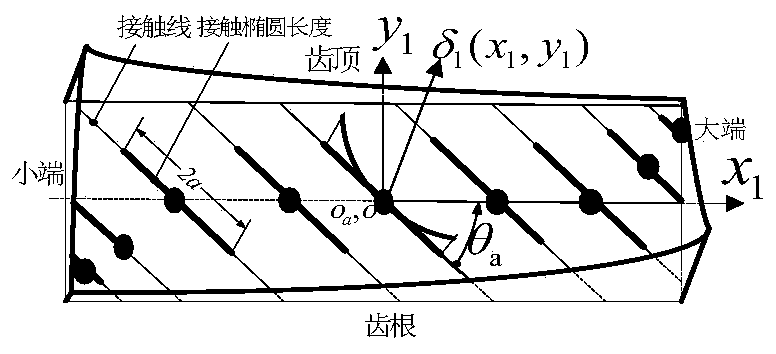Base pitch error-considered free modification spiral gear bearing contact analysis method
A helical gear and error technology, applied in the field of bearing deformation prediction, can solve the problems of non-repetition of teeth, large stiffness error, low calculation efficiency and precision, etc.
- Summary
- Abstract
- Description
- Claims
- Application Information
AI Technical Summary
Problems solved by technology
Method used
Image
Examples
specific Embodiment approach
[0065] Taking the hypoid gear processed by the HFT method as an example, a specific implementation of a free-modified spiral bevel gear load-bearing contact analysis method considering the base pitch error is further described in conjunction with the accompanying drawings, including the following steps:
[0066] Step 1: The expression of the tooth surface of the pinion gear that is completely conjugate to the bull wheel. When the tooth surface of the small wheel meshes with the tooth surface of the large wheel, it is completely conjugate, and the transmission ratio is equal to the nominal transmission ratio of the gear pair, so the meshing rotation angle of the large wheel θ 2 Angle of meshing with the small wheel θ 1 Relationship:
[0067] θ 2 =z 1 / z 2 (θ 1 -θ 10 )+θ 20 (1)
[0068] where θ 10 , θ 20 is the meshing rotation angle of the large and small wheels at the design reference point; z 1 and z 2 are the teeth numbers of the small wheel and the large wheel,...
PUM
 Login to View More
Login to View More Abstract
Description
Claims
Application Information
 Login to View More
Login to View More - Generate Ideas
- Intellectual Property
- Life Sciences
- Materials
- Tech Scout
- Unparalleled Data Quality
- Higher Quality Content
- 60% Fewer Hallucinations
Browse by: Latest US Patents, China's latest patents, Technical Efficacy Thesaurus, Application Domain, Technology Topic, Popular Technical Reports.
© 2025 PatSnap. All rights reserved.Legal|Privacy policy|Modern Slavery Act Transparency Statement|Sitemap|About US| Contact US: help@patsnap.com



